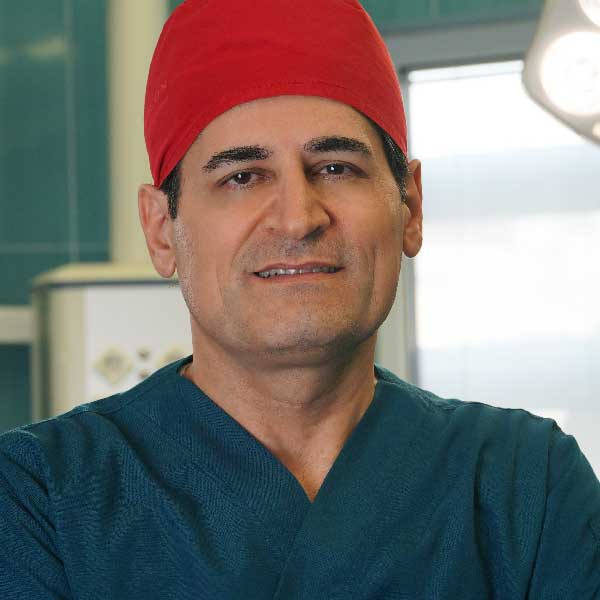Considerations before mammoplasty

A comprehensive list of procedures must be followed to ensure a safe and successful operation.
1. Consultation with a trusted and expert aesthetic surgeon
– Consult with your aesthetic surgeon face-to-face to discuss your goals, expectations, medical history, and any potential concerns.
In the initial consultation, the surgeon will evaluate your skin quality and overall health to determine that you are a good candidate for mammoplasty.
2. Medical evaluation
Comprehensive tests such as blood tests, imaging studies and other diagnostic tests are prescribed to assess your overall health and identify risk factors.
Be honest with your surgeon about your complete medical history, including any previous surgeries, medical conditions, allergies, medications, and lifestyle.
3. Breast examination
– To evaluate the size, shape, symmetry, quality of the skin, the position of the nipple and any mass or abnormality, a complete breast examination will be performed.
– If needed, mammography or other imaging studies may be performed to evaluate breast tissue density and breast cancer screening.
4. Discussing surgical options
Various surgical options for mammoplasty will be discussed, including the choice of surgical technique.
A consultation with a plastic surgeon will help you to choose the most suitable options based on the desired result, anatomical considerations and personal preferences.
5. Instructions before the operation
Follow your surgeon’s preoperative instructions carefully, including instructions on medication management, smoking cessation, alcohol avoidance, and preoperative dietary restrictions.
6. Surgical planning
Work with your surgeon to create a customized surgical plan that addresses your specific goals and concerns. Make sure you have a clear understanding of the procedure, expected results, and possible risks.
7. Financial considerations
– Get complete information about the cost of mammoplasty, including surgery costs, anesthesia costs, post-operative care and any additional costs.
– Check your insurance coverage and financing options so that the operation process continues and comes to a conclusion without worry.
8. Emotional readiness
– Be mentally prepared for surgery and the recovery process and make the most of the support system of family and friends who can help you in the surgery and recovery process.
9. Exceptional measures
In exceptional cases, additional procedures such as specialized imaging studies, consultation with other medical professionals, or preoperative consultation for complex surgical cases may be necessary.
By taking the necessary steps and thorough preparation before surgery, you can optimize your results and minimize potential risks.
Mammoplasty and psychological parameters

Psychological factors play an important role in the decision-making process, results and overall experience of people who intend to undergo mammoplasty.
1. Body image and self-confidence
Body image and self-confidence concerns are common motivations for people seeking mammoplasty. Mammoplasty helps to solve these concerns and improve body image.
2. Expectations and goals
– It is necessary to have realistic expectations about the possible results of mammoplasty. It is necessary to have a clear and honest communication with the aesthetic surgeon.
Managing expectations and understanding the benefits and potential risks of mammoplasty will help you make an informed decision and feel more confident about your choice.
3. Body dysmorphic disorder (BDD)
People with BDD may not benefit from surgery and may need psychological treatment.
Age restrictions for mammoplasty

Age limits for mammoplasty can vary depending on the specific type of operation and individual circumstances.
Breast lift (mastopexy)
There is no specific age limit for breast lift surgery, because this method is prescribed based on individual factors such as breast ptosis (sagging), skin elasticity and general health.
Breast lift surgery is usually recommended for women who have significant breast sagging due to various factors such as aging, pregnancy, or weight loss.
Breast reduction
Women who feel discomfort, pain or physical limitations due to the size of their breasts are good candidates for this style.
There are no specific restrictions for breast reduction surgery, but to achieve the desired result, it is necessary that the breast growth is complete.
Breast reconstruction
Breast reconstruction is often performed in women who have undergone a mastectomy (removal of one or both breasts) due to breast cancer or other medical conditions.
There is no specific age limit for breast reconstruction and it can be done at any age following mastectomy.
Note that age is not the only determining factor for mammoplasty candidacy. The decision to perform breast surgery should be made based on individual factors such as physical health, emotional readiness, realistic expectations and consultation with an experienced aesthetic surgeon.
Optimal weight range for mammoplasty

A specific and standard weight range for mammoplasty has not been defined. Various factors such as general health, body composition, breast size and individual goals are important in performing mammoplasty. However, it is essential that the body mass index (BMI) is within the normal and acceptable range.
1. Body mass index (BMI)
BMI is used to assess whether a person’s weight is appropriate for their height. A BMI between 18.5 and 24.9 is generally considered normal. Regarding the decision to perform mammoplasty, it is better for the patient’s BMI to be less than 32, and for those with a BMI higher than 34, we should refrain from surgery until the BMI reaches the acceptable range.
2. Health and fitness
Maintaining weight and having a healthy lifestyle can lead to better surgical results and overall recovery after mammoplasty. People with adequate physical activity, a balanced diet and general health are generally more suitable candidates for mammoplasty.
3. Breast size and shape
– The size and shape of the breasts, as well as the amount of natural breast tissue available, can affect the surgical approach and results of mammoplasty. People with larger breasts or those with excess breast tissue may need different techniques compared to people with smaller breasts.


